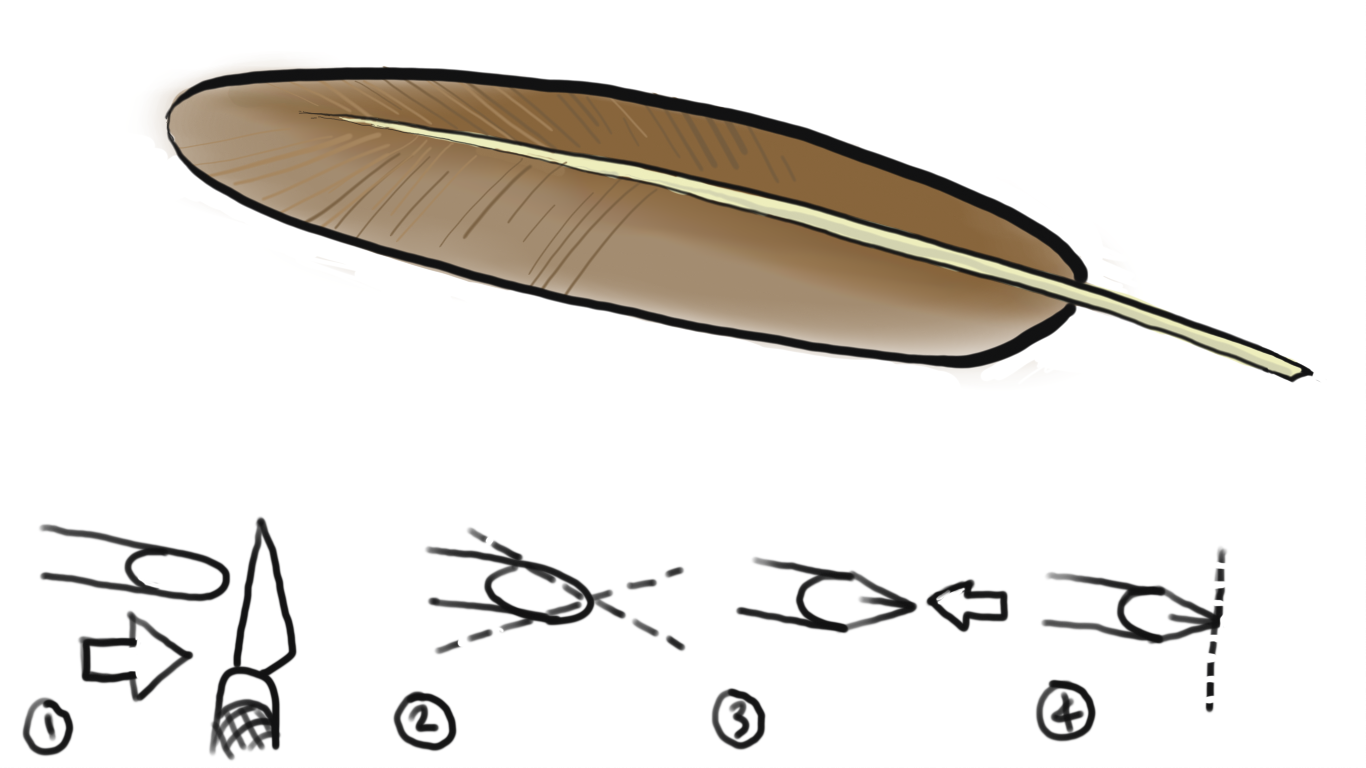I made my first quill1 pen an astonishing number of years ago.2 In these times, it makes sense to have whatever skills you can get, so I'll tell you how to do it. You'll need a good, sharp knife, a bottle of ink, and of course a large feather. A goose feather is the standard.
First, you have to find a goose. This is easiest in the spring and fall, when they are migrating, or in the summer or winter, when they are staying put. Geese are on the edge of fury quite often, and the stress causes their feathers to fall to the ground where the geese can poop on them. Still, the cleanest feathers on the ground are easier to get than the dirtiest feathers on the goose.
But not that clean, right? It's not against the rules to swish the feathers around in a bucket of warm water and laundry detergent, especially the type meant for hand-washing delicate clothes. Wash your feathers and let them dry. Unless you're planning to write something truly filthy.
Use the knife to cut the tip of the feather off at an angle. You'll end up with a nice oval.
Make cuts in the shape of an X intersecting at the tip of the oval. You'll have an oval with a sharp point.
Exactly at the point, make a short longitudinal incision. This splits the tip, letting it flex as you write.
Finally, cut laterally across the point to make a flat tip—not too wide—for a thicker line.
Once you have the shape correct, gently polish the tip on an interior wall. Not the bathroom or the kitchen, as they have gloss or semi-gloss paint, but in a bedroom or hallway. This helps remove burrs which would make the nib scratchy.
When you dip the pen into the ink, don't go too far. The "barrel" (the quill in fact) will hold a small amount that lasts for a sentence or two, but not much more than that. Dipping deeper doesn't help, and just makes a mess.
When it comes time to rebuild society,3 you can be the pen-maker.
The etymology of quill is not surprising or interesting.
It was nearly 100 years ago, rounding up!
Everything's fine.


